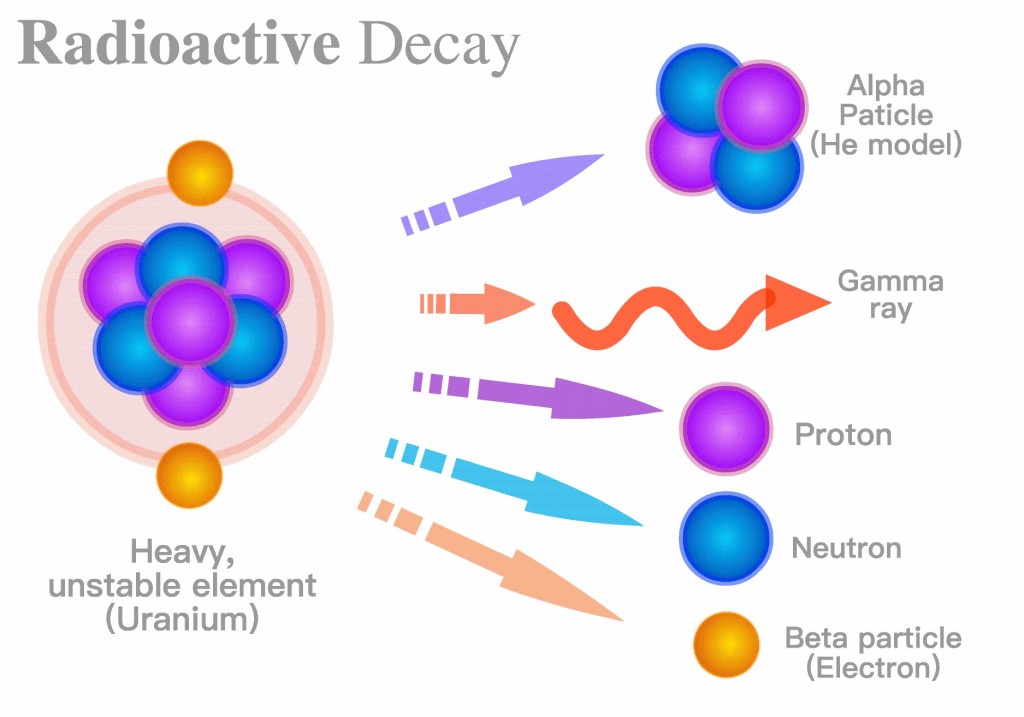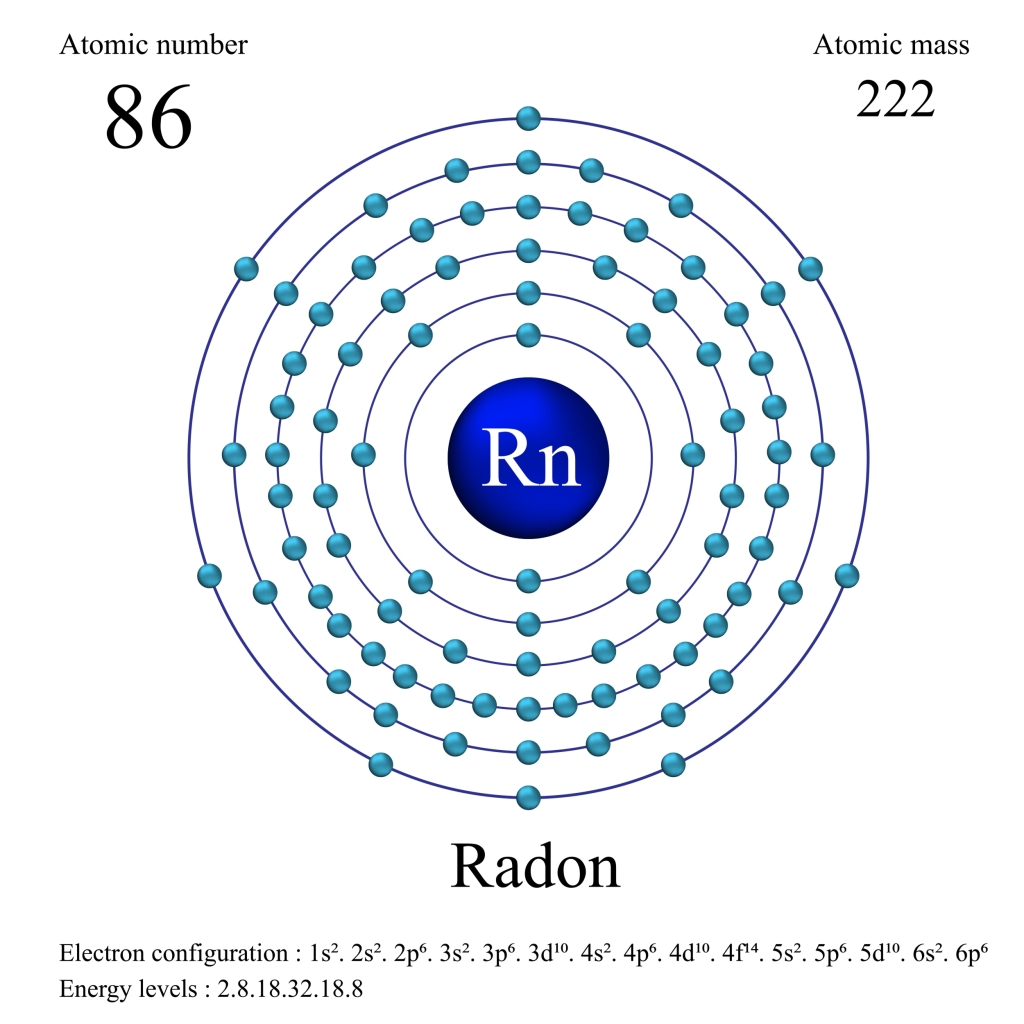Superfact 6 : Radon Represents our Largest Exposure to Ionizing Radiation
Radon represents our largest exposure to ionizing radiation. It is responsible for the majority of public exposure to harmful radiation. It is not the sun, the sky, nuclear weapons or nuclear power, or medical treatment, other terrestrial sources, it’s radon. Since we don’t talk much about the very deadly radiation emitted by the radon in our basements that may come as a surprise.
If a radioactive isotope has a long half-life, is that bad? I mean it will be around for a long time. Well, it is complicated. It is important to understand that if the decay rate for an isotope is very slow, in other words, it has a long half-life then it will be less radioactive. If the half-life is 1,000,000 shorter for an isotope X compared to an isotope Y (with a slower decay rate) than it is 1,000,000 more radioactive than isotope Y assuming their decay is of the same type. Short half life means more radioactivity. Long half-life means less radioactivity. The negative aspect of an isotope with a long half-life is that it will be around long, but the positive aspect is that it is less radioactive.

I should explain that isotopes mean that an atom can have a different number of neutrons. For example, carbon (coal) has a few common isotopes. C-12 has 6 protons and 6 neutrons, C-13 has 6 protons and 7 neutrons, C-14 has 6 protons and 8 neutrons. The isotope we are talking about when we talk about Radon is Radon-222. That is a really bad one. Radon-222 has a half life of 3.8 days which is 432 billion times shorter than Uranium-238, which has a half life of 4.5 billion years. So, if Radon-222 and Uranium-238 had the same type of decay (they don’t) Radon-222 would be 432 billion times more radioactive than Uranium-238.
Admittedly Uranium-238 isn’t very radioactive, you can safely hold it, but let’s take Plutonium-238, a famously radioactive isotope with a half-life of 87.7 years. Radon-222 has a half-life that is 8,424 times shorter yielding a decay rate and radiation intensity 8,424 times larger than Plutonium-238.
Radon

So, Radon-222 is indeed extremely radioactive. But that means it should disappear quickly. Unfortunately, the inside of the earth is constantly supplying more Radon-222 from the radioactive decay and fission occurring there. Nuclear fission (nuclear reactions) is happening inside the earth providing about half of earth’s heat and powering the movement of Earth’s continents and crust. Since Radon-222 is extremely radioactive and is being resupplied by our own planet it is a very big source of the radiation we are exposed to.
Among all the different kinds of sources it is the biggest one. Since Radon-222 is a natural phenomenon, and we focus on so many other types of other natural and unnatural radiation sources we tend to underestimate the problem. At least I did when we bought our first house. I was asking Radon, what Radon? I think it is a surprising and important fact and therefore a super fact.
Radon Exposure

The WHO estimates that radon exposure alone was estimated to have caused 84,000 deaths by lung cancer in one year. In 50 years, this would be 4.2 million deaths. The WHO predicted that the eventual total death toll from cancer related deaths from the worst nuclear disaster in history, Chernobyl, was 9,000, which is a lot less than 4.2 million. The numbers given by Greenpeace (which WHO does not accept) are up to a million and the Union of Concerned Scientists estimated 27,000.
Those numbers are all still smaller than the estimated deaths from Radon. Keep in mind that the Chernobyl reactor was a very dangerous reactor (RBMK) that lacked a containment shield, a reactor that could never be built in a western country. I can add that according to WHO the predicted future cancer deaths due to accumulated radiation exposures in the population living near Fukushima was between zero and a 100.
According to the United Nations Scientific Committee on the Effects of Atomic Radiation, more than 40% of the average annual human exposure to ionizing radiation is radon in the air. The other sources (all smaller) are cosmic background radiation, terrestrial radiation from the ground, radiation in food and water, exposure to radiation by medical treatment/exams, nuclear testing, Chernobyl, etc. According to former U.S. Surgeon General Richard H. Carmona, Radon is responsible for the majority of public exposure to ionizing radiation. Radon in our basements is indeed a very big deal compared to other radiation sources.

